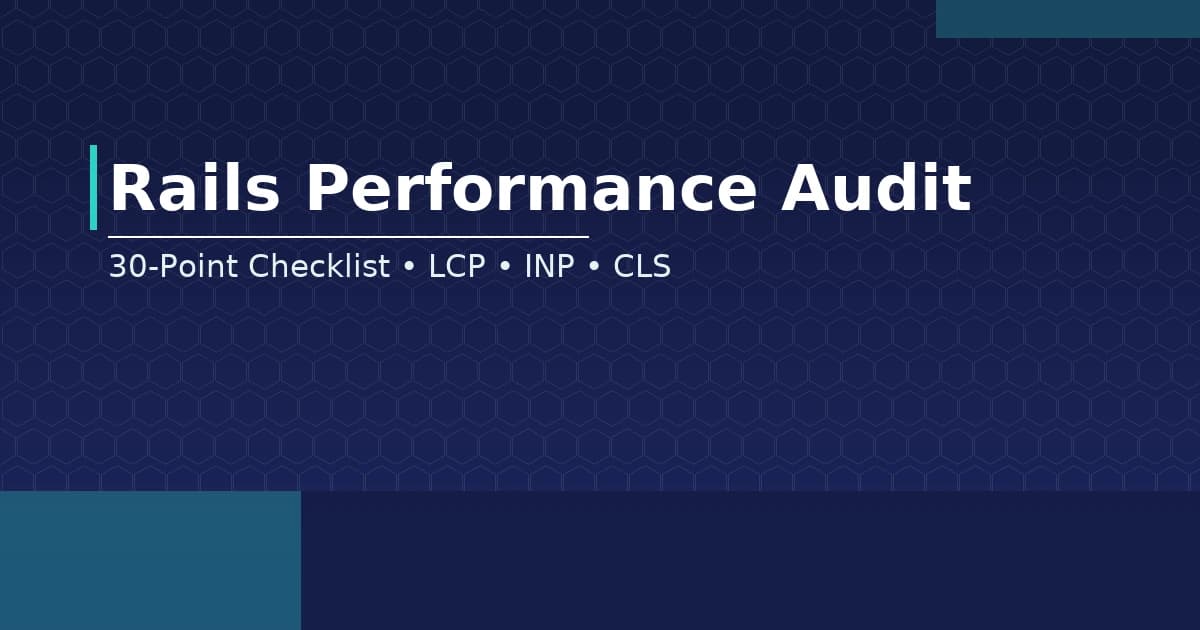Introduction
Performance is product. Here’s our battle‑tested checklist for Rails apps that want LCP ≤ 2.5s, INP ≤ 200ms, and CLS ≤ 0.1—without guesswork.
1) Measure First
- CrUX & PageSpeed field data for key pages
- APM traces (New Relic/Datadog): p95 latency per endpoint
- Error rate and slow queries; sample traces
2) Database
- Add missing/composite indexes; remove duplicates
- Kill N+1s (
bullet,rack-mini-profiler) - Partition/archive hot tables; tune autovacuum
- Read replicas carefully—watch staleness
3) Caching & Assets
- Page/fragment caching with cache keys (avoid time‑based expiry)
- Redis TTLs & memory policy sanity check
- CDN for static assets; correct
Cache-Control&ETag
4) Background Work
- Move heavy work off request cycle (Sidekiq)
- Idempotent jobs with retries/backoff
- Dedicated queues for critical paths
5) Frontend Vitals
- Inline critical CSS; self‑host fonts with
font-display: swap - Image width/height + lazy loading (except hero); use
next/image - Break up long tasks; avoid hydrating huge bundles
6) Release Engineering
- CI < 10 min with test splitting & caching
- Canary deploys + feature flags + error budgets
- Build once; promote between envs
A Minimal NGINX/Cache Header Tweak
location ~* \.(js|css|png|webp|jpg|svg)$ {
add_header Cache-Control "public, max-age=31536000, immutable";
try_files $uri =404;
}
location / {
add_header Cache-Control "no-store";
}
30‑Point Checklist
- All hot queries have indexes; N+1s fixed
- Redis keys scoped; eviction policy appropriate
- Hero images ≤ 120 KB, WebP/AVIF used
- Fonts self‑hosted;
display: swap - Core Web Vitals monitored in RUM (p75)
- Canary deploy path + rollback verified
- APM traces sampled with error budgets
- Queues sized for peak; dead letters empty
Conclusion
Performance isn’t a sprint; it’s a habit. Start with measurement, fix the biggest regressions, and guard the wins in CI/CD and observability.
Written by Ahmad
Ahmad Hassan, Senior Ruby on Rails expert with 10+ years of experience. He builds web and mobile applications using React, Next.js, and TypeScript, and contributes to backend development using Python and Ruby on Rails.
